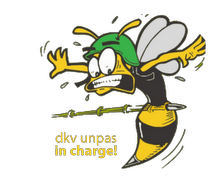The paper tries to analyze and articulate the visual language that seem to govern the process of 'symbol' design. 'Symbols' conceived in the context of environmental directional signage is being seen in this paper as having the potentials for constructing an effective graphical interface between the user and the intended facility.
'Symbols' conceived in the context of environmental directional signage, and one that is specifically intended as a public service facility, is being seen here as having the potentials for constructing an effective graphical interface between the user and the intended facility; the objective is to facilitate the activities of locating, identifying, informing and directing the user through the various gamut of activities of a given service facility.
This paper has been written from the perspective of the designer, who is the producer of these representations, and who seeks to appropriately construct these representation through an amalgamation of approaches viz., the generative approach, which consists of a search for effective images; and the constructive approach, which comprises one's ability to visualize images that are required to be converted into graphical symbols.
It is being contended here that these graphical symbols have to be conceived from the point of these being easily recognizable, and hence represent themselves as a derivative of contextually familiar images. It follows, therefore, that when there is sufficient iconicity or resemblance between the visual representation and the content it refers to, these are relatively easy to visualize. But when this is not the case, the representation of the message areas could need methods that would have to attempt to understand/ visualize how these are perceived by the user, and only subsequent to which can emerge as a result of such visualization.
Assuming that the designer uses one of the above methods, or uses his own interactions within the environment as a substantive basis, or draws upon reserve of existing solutions; and then evaluates and identifies the semantic requirements of the said image; he will now be required to convert these into an appropriate symbol.
This aforesaid process is being considered as a method for constructing a level of visual order, where the paper tries to identify and isolate these very formal features that go to define the characteristics of the graphic 'symbol'. Such identification of the necessary syntax eventually helps to articulate the visual language that seems to govern the process of symbol design.
As an interesting extension of the above mentioned methodology, one could formulate a set of formal modifications of structural constructs for these representations, that might lead to having a diversity of visual styles in a manner similar to variations offered by typefaces (this portion has been excluded in this summary).
For this paper, this processual section has been followed up by a case study of symbols design which are meant to serve as part of environmental signage for public hospitals located in urban India.
For further details about the above paper click here

